With the push for common core rigor, many states have included paired passages in their state assessments. Paired passages and paired texts are a tricky skill for students, especially struggling readers. I have written about how I implement rigorous paired passage instruction here. However, teaching paired passages can be so tricky and I still get lots of questions about how to teach paired passages to meet the rigor of the standards.
I want to share six tips (and a few free resources) to effectively teach paired texts and paired passages so that all your students can find success. Hopefully these tips will give you some more resources and ideas to add to your toolbox.
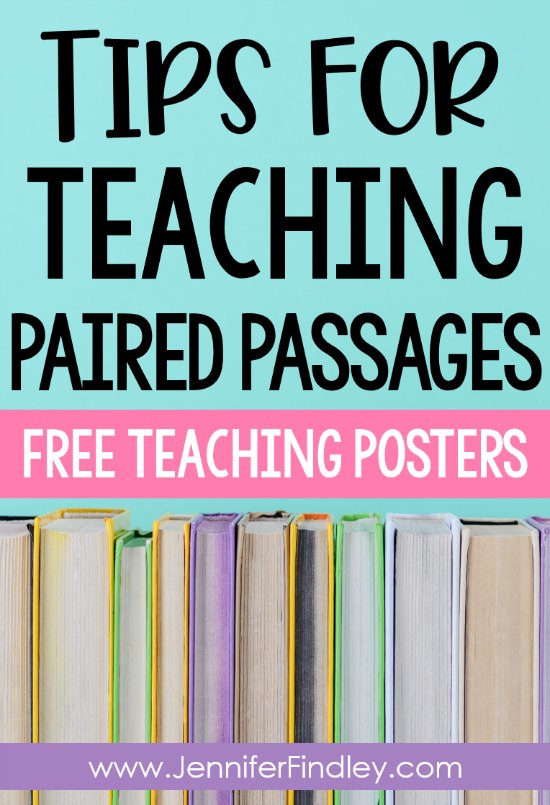
What Are Paired Passages?
Before diving into the tips for teaching paired passages, let’s talk a bit more about what paired passages and the different types of paired passages and texts your students should be exposed to in 4th and 5th grade.
Paired passages are passages that are connected or similar in some way. The passages the students see in upper elementary move beyond the fiction/nonfiction paired texts used in primary grades. in 4th and 5th grade, the passages can be paired in many different ways, including, but definitely not limited to, the fiction/nonfiction pairings.
Here are just some ways that paired passages and texts can be connected:
1. Both nonfiction with the same topic but varying details/focuses. For this type of paired passages, the overall topic is the same but the focus of the author(main idea, main point, or even text structure) is different. One example is paired passages on pollution. One of the texts may focus on causes and effects of pollution while another may focus on the evolution of pollution over the years.
2. Both fiction with similar themes. Both stories teach the reader the same lesson but are developed using very different story elements, which may even include very different genres.
3. Both fiction with similar plot elements (same problem, same challenge, etc). Often, these types of paired stories will have 1 or 2 similar plot elements but the rest of the elements or details will vary drastically. My favorite paired stories that fit into this character are when the stories have similar problems that are handled in very different ways by the main characters.
4. Different genres but with some connecting aspect (describing the same problem, about the same overall topic, etc). This goes along with the above examples but specifically focus on how the genres are different but other elements are similar
5. Same argument but with differing positions. This is a common pairing in 4th and 5th grade. The paired passages will both be discussing the same issue or problem, but with opposite stances or positions (or even the same stance, but with different reasons and details to support the author’s stance or position).
Now, that we have a good grasp on paired passages and the specific types of paired passages that we need to expose our students to in 4th and 5th grade, let’s dive into those tips.
1. Use mentor texts to make it “authentic.”
When I first introduce the concept of paired texts, I do not use passages. Instead, I prefer to use authentic mentor texts/read alouds. I follow this sequence:
- Read one text and discuss. Depending on the length of the text, this make take 1 or 2 days.
- Read the second text and discuss.
- Revisit both texts and compare and contrast them. I typically do this in an open discussion format. We just openly compare and contrast anything that comes to mind.
- Revisit both texts for a more focused compare and contrast discussion. For this day, we specifically discuss skills such as theme, characters, etc.
–>Want to see examples of using paired read alouds/mentor texts?
Read (and grab freebies) for two Thanksgiving paired read alouds here and two September 11th paired read alouds here.
2. Integrate across the curriculum.
One of my favorite ways to expose students to paired texts is through history topics. There are so many great historical fiction read alouds that make it so much easier to pair nonfiction texts with engaging read alouds.
When learning about the Great Depression, we read and analyze informational text to learn the key facts and details. Then, we read picture books such as The Gardener and Saving Strawberry Farm to help the students “feel” what it was like during this time. The students are easily able to compare and contrast the two texts and understand the different purposes for each.
Another way to integrate paired passages in social studies is to read about historical events through the perspectives of different people. This works well with any war and during different significant time periods such as the Abolitionist Movement and The Civil Rights Movement. The students can read the different perspectives of the same event, compare and contrast them, and then analyze how the perspectives influenced the events.
Using paired texts in science and social studies helps students in two ways:
- It helps make the science and social studies topics comprehensible and relatable.
- It exposes students to a variety of paired texts which will build their confidence and skills when analyzing paired texts.
3. Use high-interest topics that will engage your students.
When creating paired passage resources, I try to be very intentional about choosing a wide range of topics that would interest the majority of the students. I think it is important to teach the skill of analyzing paired texts with texts they will find engaging and interesting.
Some of my students’ favorites are the texts on 9/11 and the exploring the moon. They also really enjoy my seasonal/holiday paired passages. This takes a tricky reading skill and makes it more enjoyable for the students.
4. Provide direct instruction on paired texts and passages, how to analyze them, and how to effectively answer questions about two texts.
When I first began instructing students on how to master paired texts and paired passages, I put myself in the minds of my students to think about what would hinder their progress or be confusing for them. We follow this process when tackling paired passages:
- Read the first passage, discuss it, and answer questions.
- Read the second passage, discuss it, and answer questions.
- Analyze the connection or similarities and differences between the two passages, re-reading them if needed.
- Answer questions that require the students to integrate details from both texts.
Here are the go-to paired passage anchor charts that I use during my paired passage instruction. I use these anchor charts as I “teach” the process of analyzing paired passages and paired texts. These have been huge in helping my students find success. I introduce them early on and we refer to them on a regular basis when dealing with paired texts and passages.
Paired Passage Anchor Chart #1
This paired passage anchor chart is used when introducing paired passages and paired questions and tasks.
Paired Passage Anchor Chart #2
This anchor chart shares the steps we take as a class to read and analyze paired passages. Click here to read more about how I use these steps during my paired passage instruction.
 Paired Passage Anchor Chart #3
Paired Passage Anchor Chart #3
The final paired passage anchor chart is a simplified version of the 2nd chart that uses a READ acronym to help the students remember the steps we take when we read and analyze paired passages.
FREE Paired Passage Charts
5. Embed paired passages and texts throughout the year.
This one is important. To truly be successful with paired passages and analyzing them, students need a lot of practice. They need that practice to not only build their skills but to also build their confidence and familiarity with different types of pairings and questions.
When I am teaching my regular reading skills, I regularly embed in paired passages. Here are the reading skills that naturally lend themselves to paired passage integration:
- Theme – Read two passages and determine a common theme.
- Story Elements – Read two passages with similar story elements and compare and contrast them.
- Point of View – Read passages from differing points of view/perspectives and analyze the differences.
- Multiple Accounts – Read passages about the same event or topic and analyze the similarities and differences.
- Text Structure – Read multiple passages on the same topic and compare and contrast the details provided and how they are organized.
6. Use centers and collaborative activities.
Teaching and reviewing paired passages using collaborative activities is something I started last year and it made a huge difference in my students’ engagement and mastery. The previous year, paired text and paired passage instruction was primarily whole group or independent-based. However, last year I knew that I wanted some resources for my students to practice working with paired passages in groups or pairs.
Here are my favorite paired passage activities that work well with partners, in small groups, or in reading centers.
Task Card Style Questions
This simple change made a huge impact on engagement. We would read the paired texts together and discuss as a class (not always – but most of the time). Then the students would answer the questions as part of a literacy center in a small group of 3-5 students. They loved having the chance to work together and discuss the passages.
Click here to see Paired Passage Resources Set 1and here to see Paired Passage Resources Set 2 to see the sets that provide questions in a task card format.
Paired Passage Reading Response Center
I also wanted a paired passage reading center that I could use for any paired passages or paired texts that I was using with the students. I also wanted it to be general enough that I could also use with paired read alouds or texts paired in guided reading. So, I created a reader’s response “game” involving paired passages.
For this reading response center, the students roll two dice and then answer the constructed response question they land on. This is designed as a partner game, but can also work as an independent center. It also includes two reading centers for individual texts as well.
You can grab this FREE paired passage reading response center here. Note: There are also two reading centers for independent texts that are not paired.
Paired Passage Reading Game
Then, I wanted to take it even further and make paired passage practice into a game format. So this year, I created paired passage reading centers with the questions on a game board.
This was a game changer! The students love this center the most. Each center (the resource contains five) includes two paired passages and a themed game board. The themed game board includes questions from each passage individually and then questions that require the students to use both passages. Click here to see these paired passage centers in my TeacherPayTeachers store.
You can grab a FREE paired passage center by clicking here or on the image below.
Those are my best tips for how to teach paired passages and paired texts in my classroom. Do you have any tips to share? I am always looking for new ways to help my students master tricky skills. Let me know in the comments.
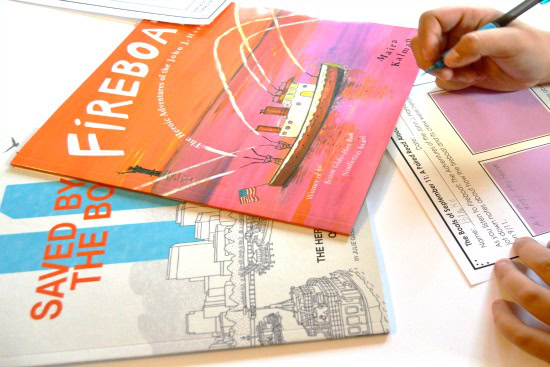
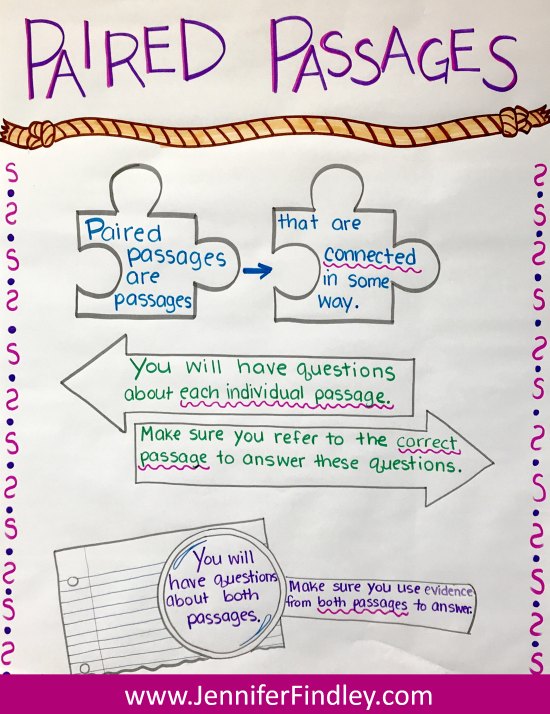
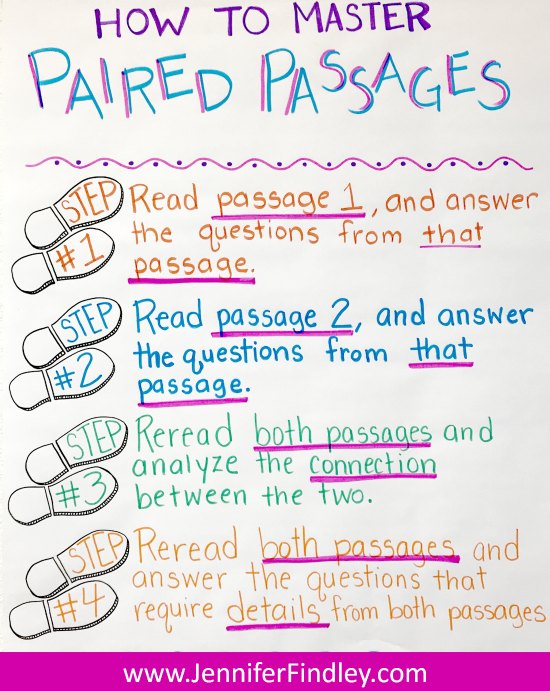 Paired Passage Anchor Chart #3
Paired Passage Anchor Chart #3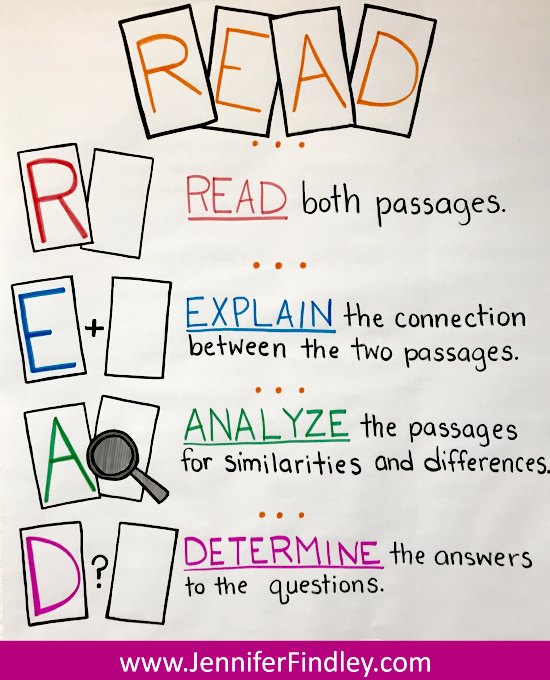
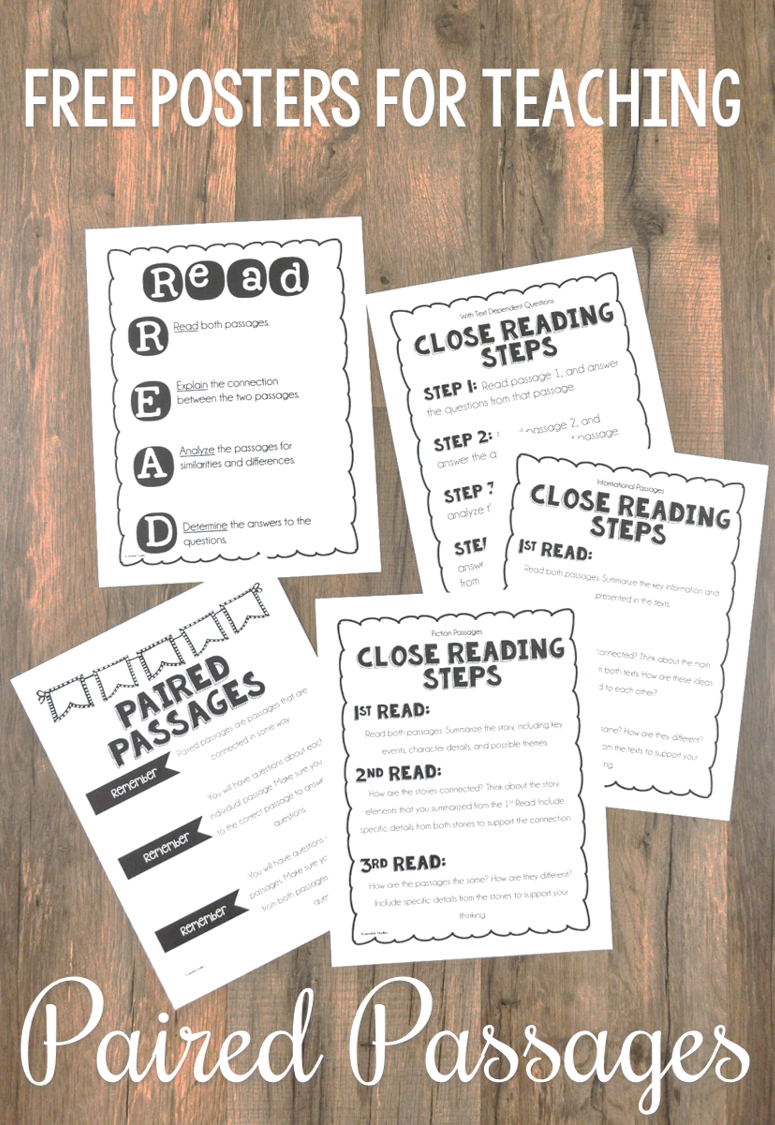
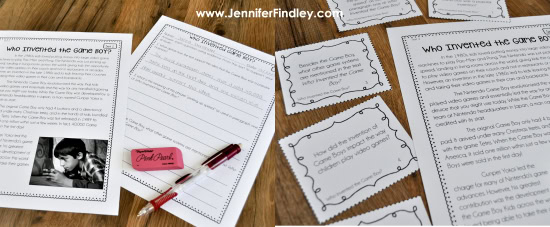
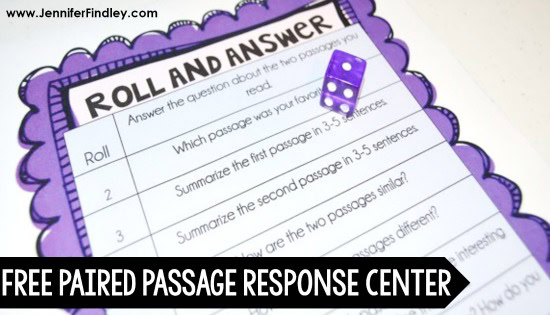
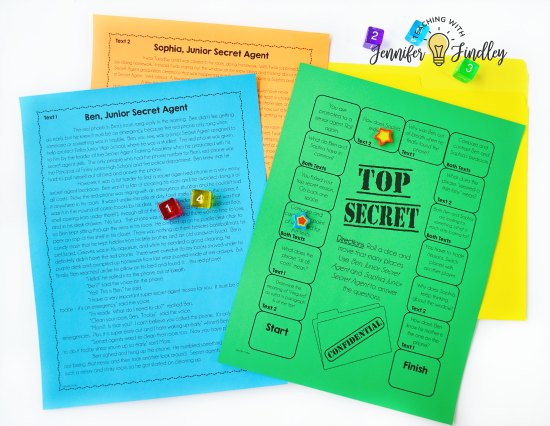







Thanks for all the great information!
These are wonderful, well-designed resources! Thanks for sharing!
As a homeschooling parent, this information really comes in handy. Thank you so much!
Thanks for this information. I found it useful even for my 9th graders. One little note, teacher to teacher, “We just openly compare and contrast anything that comes to mine.” Should read, …comes to mind.
Thanks for the heads up! And I am glad the information was useful.
Anchor Chart for Paired Passages-can you add a T-Chart to this chart? I would like to show my students how to use the T-Chart to list the similarities and differences in the passages.
Thank you kindly.